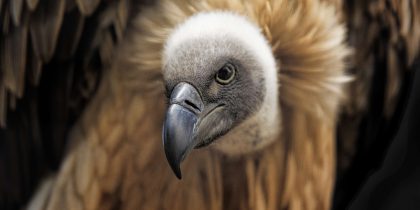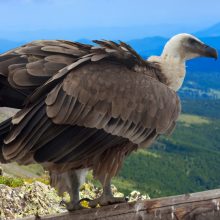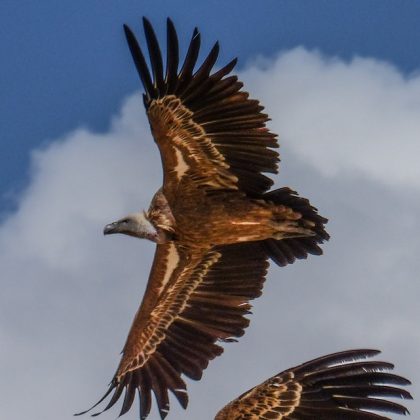Why we can’t afford to ignore the vulture crisis
Why are vulture populations collapsing, what can we do to stop this, and why is it crucially important that we do? Scientists across the world call for urgent action – and also showcase plans and successful projects that guide the way.
What do you think of when you picture vultures? Death, fear, expanses of vast desert wilderness? Not many people know that we need vultures far more than they need us, and their waste disposal services are essential to human health. Even fewer people know that their populations are collapsing across Africa and Eurasia – in fact, eleven of the sixteen vulture species on these continents are at risk of extinction in our lifetimes. This is something that we simply cannot allow to happen.
But why are vultures under threat? The reasons are varied. In Asia, it’s largely down to the veterinary use of the non-steroidal anti-inflammatory drug diclofenac – this is given to livestock, but is toxic to vultures that may scavenge their carcasses. Their decline has had grave consequences for people. Following the collapse of Asia’s vultures, India’s feral dog population surged thanks to abundant carrion that would previously have been eaten by vultures; this is believed to have caused a huge increase in rabies with a heavy human death toll. And that’s not even mentioning the cost in cold economic terms.

In Africa, we are beginning to see a similar decline, for reasons more complex and less well-publicised. Some vultures are killed for ‘belief-based use’, in misinformed attempts to treat a range of physical and mental diseases, or to bring good fortune. Others are deliberately poisoned by ivory poachers who don’t want circling birds drawing attention to their illegal activity. Still more are the accidental victims of poisoned bait intended for livestock predators such as lions. And then there are the threats common to many raptors: habitat destruction, lack of food, and electrocution or collision on power infrastructure are just a few.

In our opening commentary for the latest issue of Bird Conservation International, vulture specialists across the world call for urgent action. But we don’t just bemoan the problems – we also present the solutions. The global conservation community has already got started, and we draw attention to the most recent and successful projects that, if rolled out on a larger scale, could avert catastrophe.
In Asia, the international coalition SAVE (Saving Asia’s Vultures from Extinction) is working with Governments to enforce bans on veterinary diclofenac and some other NSAIDs that have been found to be toxic to vultures, and to create large areas of ‘Vulture-safe Zones’ which are increasing becoming free of toxic veterinary drugs. Here, vultures have much-needed breathing space to recover their numbers. And it’s beginning to work: in South Asia, the population declines of ‘Critically Endangered’ vultures have slowed, and the White-rumped Vulture . Approaches for tackling other forms of poisoning, in Africa and elsewhere, are showing signs of success, and an abundance of guidance on wildlife-friendly power infrastructure is available. Europe is also a shining example of good practice, where vulture populations are increasing and expanding into their former range: Griffon Vulture populations in Western Europe have increased by over 200% in the last 12 years, with Spain alone holding over 26,000 pairs.
We recently made a great leap towards rolling out these successes further. In 2017, the national Parties to the Convention on Migratory Species collectively adopted an ambitious Multi-species Action Plan to conserve vultures across Africa and Eurasia. Countries are committed to working together towards a common aim, using previous successes as model for future projects.
There’s no doubt the scale of the challenge is daunting: how do we know which areas and species to focus on? Our report ends with a section to guide people through the myriad approaches, problems to solve, areas and species needing attention. We have the signposts guiding the way: now we just need the world to follow them.
The paper Vulture conservation: the case for urgent action by Roger Safford, Jovan Andevski, Andre Botha, Christopher G. R. Bowden, Nicola Crockford, Rebecca Garbett, Antoni Margalida, Iván Ramírez, Mohammed Shobrak, José Tavares and Nick P. Williams is available for free in Bird Conservation International.






